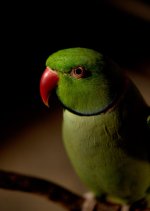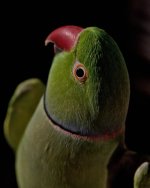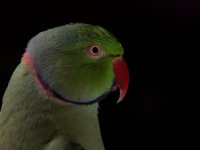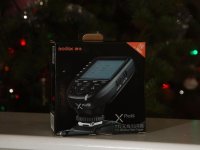Of course - only the one in TTl would give out the pre-flash. Hence "getting to 'M' " ....
Recommended option would be to go manual using the on board commander mode to trigger the one and then make adjustments based on output desired (best done with light meter or failing that trial and errors) If I could get both to work on CLS then I could control the output of that group from the camera (have to play with how they fit into that softbox to get both of the CLS sensors out of the box and only the lighthead in the box.
Yeah, there are many TTL complications.

The Commander is simply incompatible with other systems, including real actual manual flash mode (the mode M on the flash menu). The handheld light meter is also incompatible manual gear, designed for real actual manual flash. Because, the Commander, even if in its MAN manual flash mode, still outputs many flashed commands, like to transfer the power level from the commander menu to the remote flash(es). All that flashing will trigger the optical slaves early, before the shutter opens. Then the meter will meter what it sees (that weak early command flashing). And this flashing is far too complex for the simple S2 slave options to deal with.
There are several reasons (detailed at
Using the Nikon CLS Remote Wireless Flash System - Part 2 ) why the Commander just ain't gonna work mixed with other systems, including mixing with real actual manual systems. The handheld meter failing with the Commander MAN menu might be worked around by IR filtering the commander, and the meter not being too close to the Commander. But "compatible" is a word far too big.

The best advice is if using the Commander, then use it, for all flashes. Otherwise, use another system. The Commander is much more direct line of sight though, often works well, but problems can become much worse than with the simple optical slaves. The remotes do need to see the commander.
I have to remember that the TTL pre-flash metering by the commander unit is done by 'group' (e.g. A, B, or potentially C if available via an mounted flash or Nikon CLS Commander unit) You are recommending one flash per group, hence two or maybe three flashes. I tend to think of a 'group' of flashes as more than one but I understand what you are saying. I've been using three flashes under Nikon's CLS, four if you count the pop-up as controller. So again, if I want to control more than a couple of flashes in TTL that is another reason to get radio control system (and even then it may be hit and miss.
Yes, one group can control more than one flash simultaneously. But yes, I do tend to imply a group is one flash, since all shared have to share the same power level, which is NOT individual control. If you want to control individual flashes, that is one flash per group.
My notion is that commander seems great (and quick and easy) for two flashes in umbrellas, but more becomes a big deal.
Multiple manual flashes and a handheld incident meter becomes the norm for more flashes, and for more careful critical setups. Much more control and versatility is possible then.
RE: Ratio etc
Been wrapping my head around the ratio and balance with lighting. Ambient vs flash lighting and the positioning of the lights. Lots to learn here. Learning how adjusting shutter and adjusting aperture works differently with the lights on. The duration of the flash is another factor, through in HSS into the mix and it gets even more complicated. Reading how P.Wizard does HSS differently than others was one of the attractions of P-Wiz but probably not going that way, ... yet.
Lighting: Speaking of portraits, the simple baseline first idea is this:
Main flash, high and wide of subject, like perhaps 45 degrees both high and wide of subjects nose. This mimics sunshine angles, it makes intentional shadows for the lens to see, showing shape and curves, etc. Adds interest, not a flat light. (flat does have uses sometimes). We might try to categorize different shadow patterns, but high and wide is the common starting point.
Fill flash: to fill the above harsh dark shadows, to instead become very mild gradual tonal changes, still adding interest by showing shapes and curves. This gradual tonal fill is all important, to be "natural". Ratio is the whole idea.
The Fill flash should be located very near camera lens axis, to fill the same shadows that the lens sees, without adding a second set of shadows to distract. This means the fill flash has to be back near the camera, so the lens can see around its umbrella. Behind and above camera is a popular place for it. Fill flash level generally should be around -1 EV from the main light, which is a good ballpark degree of fill ratio (grayscale can use more ratio, but more ratio often distracts from color). Maybe SOMETIMES less ratio for ladies and children, and more for grizzled old men, the prospector type. So even if the fill is -1 EV, this greater distance might mean that fill is the larger flash power needed.
If you do that much, the result will be pretty good. Then a background light and a hair light can add more control of the result.
The PowerWizard Hypersync feature is not HSS. Similar, it does allow a faster shutter, but it is not a constant power level for the total duration (like HSS is). The flash unit has to do HSS, a radio trigger cannot create it.






